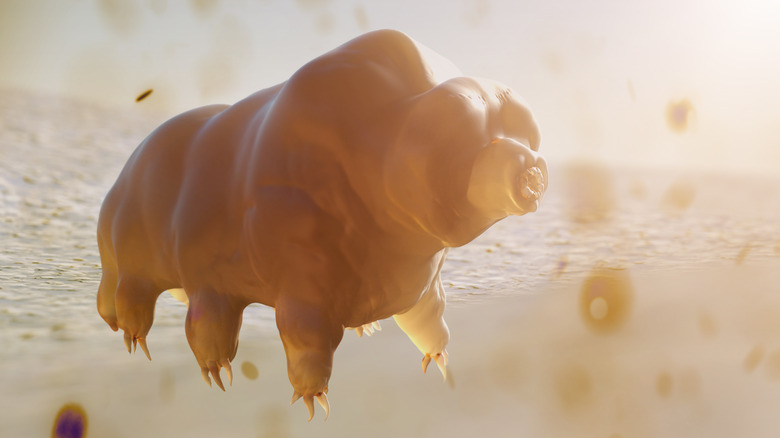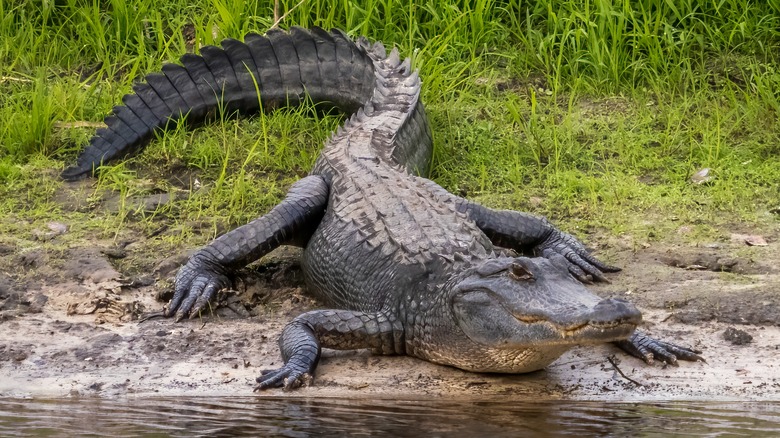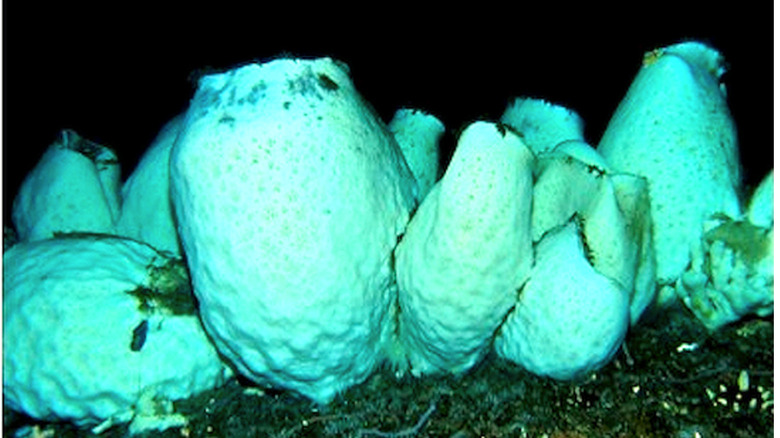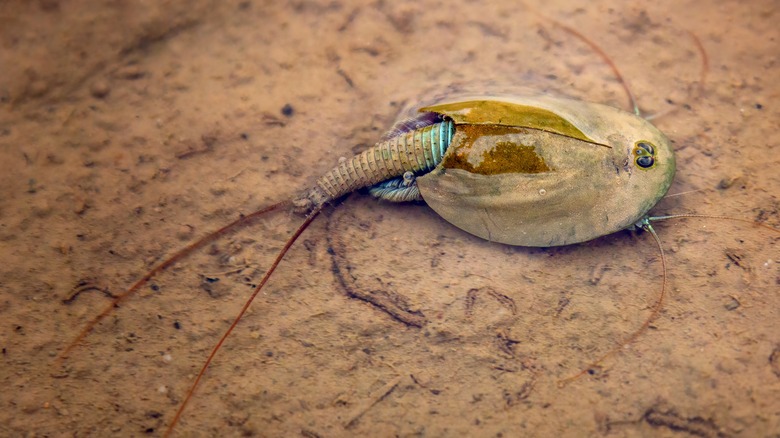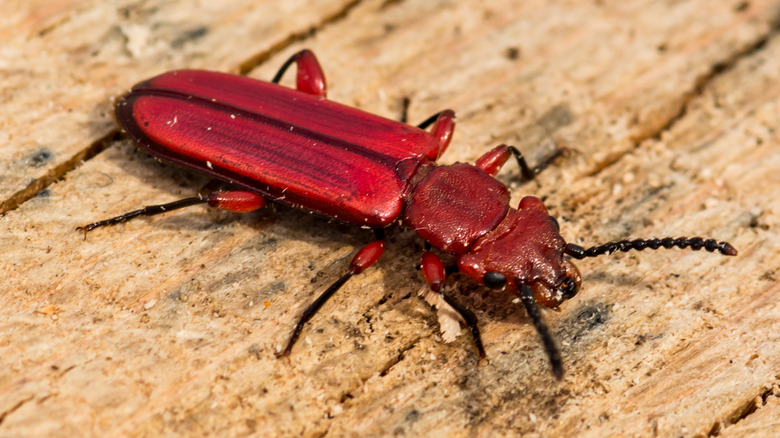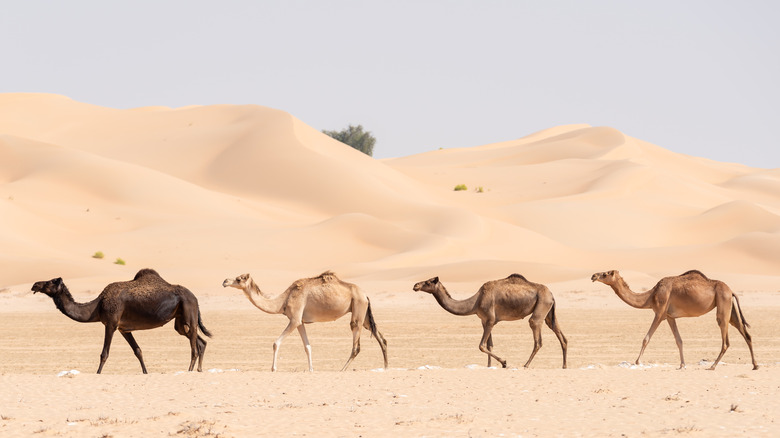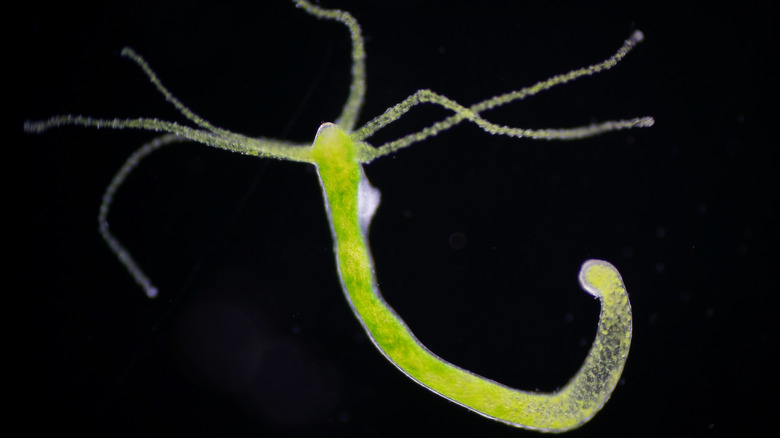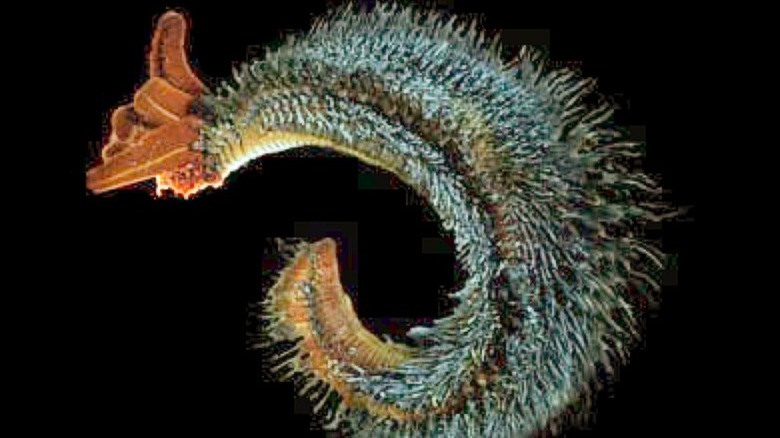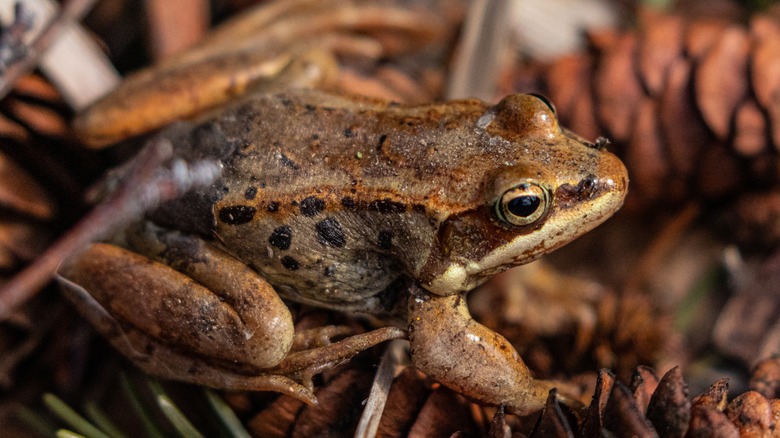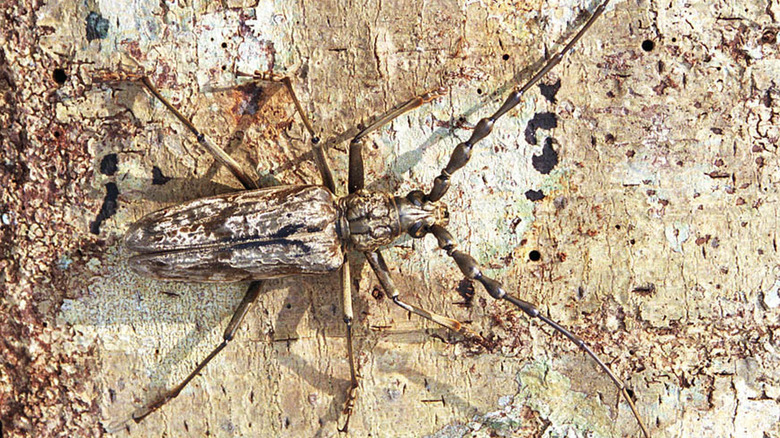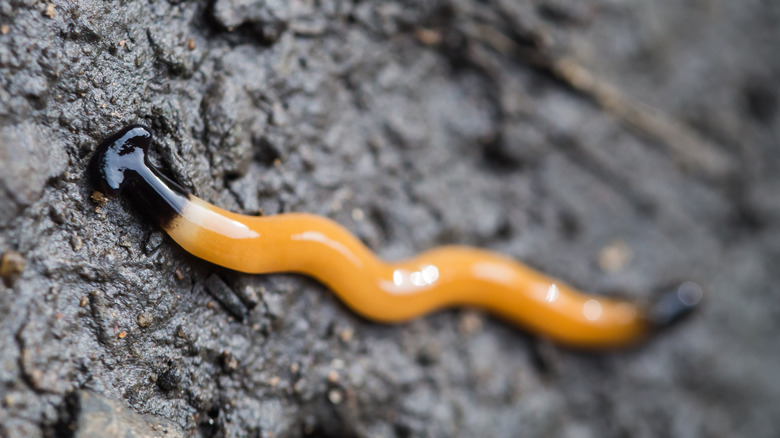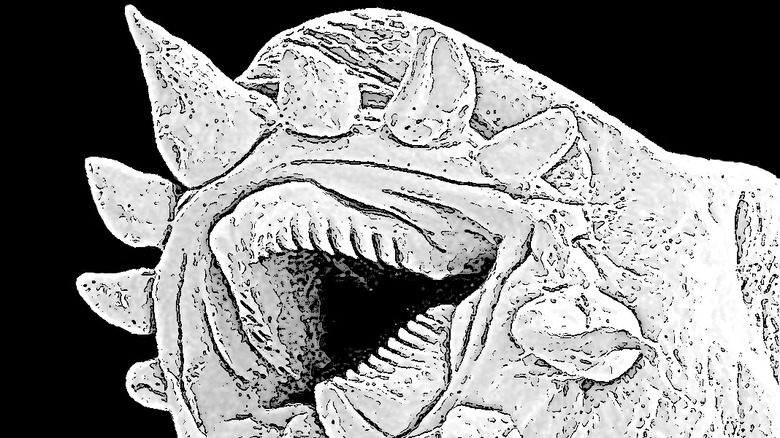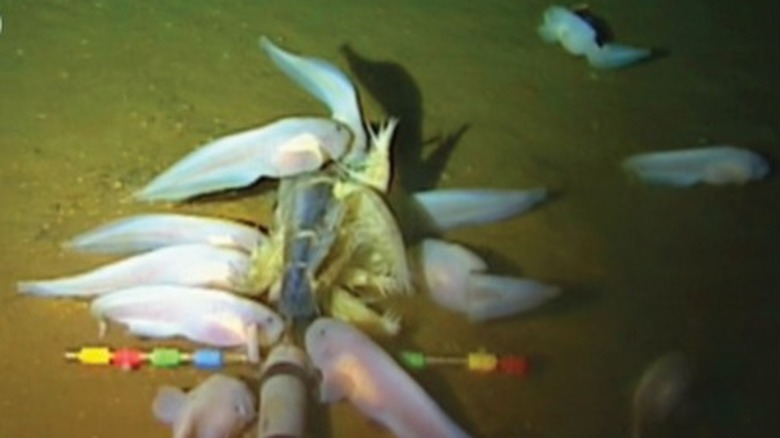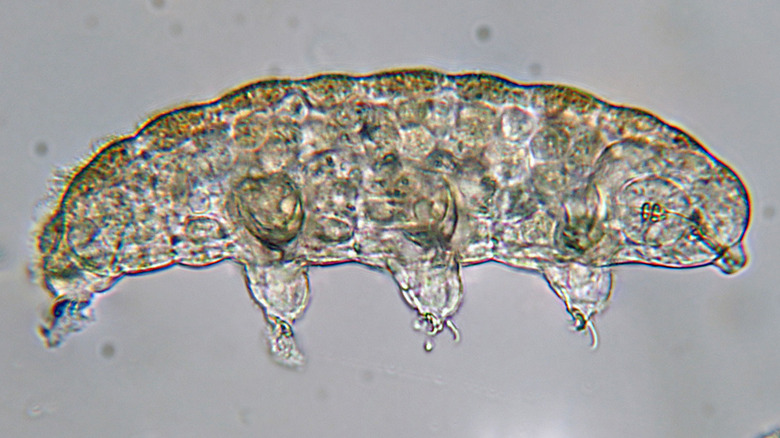Superpowered Creatures That Can Survive Anything
Life on Earth is nothing if not resilient, with many living things found thriving in an astonishing variety of living conditions, some of which seem like they should be too hostile to survive in. The most hardy lifeforms on Earth are known as extremophiles, named specifically because they thrive in extreme environments which would quickly kill most other things, including humans. A paper in the journal Life explains that these extremophiles are perfectly comfortable living in Earth's most severe environments, including scorching heat, freezing cold, crushing pressure, and even acids strong enough to dissolve metal. With their ability to live in such unusual places, these lifeforms are of huge interest both to biologists, and to astrobiologists who look for life elsewhere in the Universe.
Most extremophiles are microbes — single-celled lifeforms, far more primitive than any animal. But true animals have quite a few survival tricks of their own. Live Science makes mention of one particularly interesting little creature, known as a loriciferan. These are the only known animals in the world that can survive without oxygen at all. Strange little beasts like loriciferans prove that, in exceptional circumstances, life on Earth can seemingly rewrite its own rules. Of course, not all of Earth's superpowered animals go to such unusual lengths, but their abilities can be no less remarkable.
Alligator
Alligators are a familiar sight in parts of the southeastern United States, particularly in Florida, per Britannica. There are two species in the world: the American alligator (Alligator mississippiensis), and the slightly smaller Chinese alligator (Alligator sinensis). Alligators are surprisingly resilient creatures, with a couple of remarkable survival tricks up their sleeves. How Stuff Works notes that an alligator can survive for up to three whole years without eating a single bite of food, due to their exceptionally slow metabolisms, as The New York Times explains. Modern crocodilians, which include alligators, seemingly evolved this way as a survival trick, allowing them to survive long periods when food is scarce, and making it easier to hibernate.
Their slow metabolism is also partly the reason an alligator can spend so much time underwater. As New Scientist mentions, they can go for a whole hour without taking a single breath, which is about the same as an average whale (via Live Science), despite alligator lungs being relatively tiny. A slow metabolism is just one side of the alligator's trick — the other half is quite literally in their blood. Hemoglobin is the protein in animal blood that carries oxygen around the body (via Britannica), and crocodilians such as alligators have specially adapted hemoglobin which conserves oxygen, supplying it only to the parts of the animal's body which need it most. It's such a clever trick, that some scientists are researching crocodile hemoglobin to try and make artificial blood, which emergency room doctors could use for emergency transfusions.
Antarctic Glass Sponge
Ultimately, the most deadly thing for any living thing is time. It's impossible to outrun old age, but some animals still try their best. One such animal is the Antarctic Glass Sponge (Anoxycalyx joubini), which has an exceptionally long lifespan. As the BBC notes, these sponges can live for up to 15,000 years, making them the longest-lived creatures on the face of the Earth. Living in the frigid Antarctic seas, the low temperatures mean they grow incredibly slowly, which is why they live on timescales that humans can barely comprehend.
The term "glass sponge" isn't purely poetic, either. As National Geographic explains, they have skeletons made of biogenic silica, meaning that their "bones" are quite literally made of the same stuff that glass is. However, seemingly not all Antarctic Glass Sponges are quite so slow growing. One study showed that they can occasionally go through growth spurts, largely as a result of a change in their environment that brings more plankton — upon which they feed — their way. So, while the sponges usually like to take their time, they don't miss the chance to grow faster when there's more abundant food for them to eat.
Triops
Triops are a group of strange little crustaceans that can be found all over the world, and the secret to their survival lies in their exceptionally durable eggs. Mental Floss explains that these eggs, technically known as cysts, have a structure that protects them from a variety of otherwise damaging environments. Triops eggs can endure arid conditions, extreme temperatures, and even ionizing radiation. They can also pass unharmed through the digestive tracks of animals, allowing birds to scatter triops eggs the same way they scatter seeds (via Sciencing).
Triops eggs are also remarkably long-lived. A paper in the Japanese Journal of Applied Entomology and Zoology notes that these eggs can survive for extended periods in a kind of suspended animation, called diapause (via Britannica). In dry conditions, triops eggs can remain viable for decades before hatching, and when they do hatch, triops are adapted to live in ephemeral pools, as described by Central Michigan University. With seasonal rains or flash floods, they hatch and rapidly live out their lives in the few weeks before the water dries. This opportunistic lifecycle has served triops well, with their earliest ancestors dating back to the Triassic period, as a paper in Molecular Phylogenetics and Evolution discusses.
Red flat bark beetle
Like them or loathe them, insects live all over the planet. With an estimated 10 quintillion insects sharing Earth with us, per the Smithsonian, they outnumber humans roughly a billion to one, and lots of them have impressive survival tricks up their sleeves. The red flat bark beetle (Cucujus clavipes) can be found living in forests across North America and, as described by Penn State University, they have the ability to tolerate severe cold weather unscathed. In fact, according to the BBC, the red flat bark beetle has the amazing ability to survive being completely frozen.
These beetles have a couple of special adaptations which protect them from harm in the cold. Firstly, their bodies are filled with a kind of natural antifreeze. Proteins in the beetles' tissues prevent water molecules from grouping together, and their bodies contain high amounts of glycerol, a once-common antifreeze (via Britannica). In addition, as temperatures fall, the beetles have a way of dehydrating themselves, getting rid of any excess water. All of this works to prevent ice crystals from forming, which would otherwise do fatal damage to the beetles' bodies.
Thanks to all these tricks, scientists have found that the larvae of the red flat bark beetle can survive temperatures as low as minus 238 degrees Fahrenheit (minus 150 degrees Celsius). Temperatures this low will kill most other creatures, meaning that once they thaw out, the red flat bark beetles have little competition for food.
Camel
Famous as desert animals, camels have been domesticated by humans for 3,000 years. As San Diego Zoo explains, camels are experts at surviving in arid environments, thanks to a variety of impressive adaptations. They can tolerate a dramatic range of temperatures, from an icy 20 degrees Fahrenheit (minus 29 degrees Celsius) up to a scorching 120 degrees Fahrenheit (49 degrees Celsius), and can survive for months without food. When they do get the chance for a meal, camels will happily eat nearly any vegetation they find: As Live Science notes, camels have thick lips, allowing them to eat plants that are too thorny for other animals to even attempt.
Living in such dry places, camels are also exceptionally good at conserving moisture. How Stuff Works mentions that a camel can go for up to seven months without drinking, and, when water is scarce, a camel can get all the moisture it needs from whatever food it can find. With exceptionally efficient digestive tracts, a camel's three stomachs extract every last ounce of nutrition from anything it eats — and nearly every drop of water. Camel dung is so dry that nomadic desert peoples like the Bedouin burn it for fuel, per Britannica.
On top of this, camels have a couple more tricks to manage the hot sun. Firstly, camels tend to stand facing the sun, to minimize the heat that their bodies are exposed to. Additionally, and most remarkably, is that a camel's brain can selectively cool itself, helping the animals to avoid heat stroke.
Hydra
Hydras are an entire genus of tiny creatures that live in freshwater ponds and streams, using trailing arms to catch passing food, in much the same way as sea anemones. They're named after a monster from Greek mythology, which was able to regrow lost heads — and they can actually pull off a similar feat themselves. As Smithsonian Magazine describes, a hydra has the ability to replace any lost or damaged body parts, and even regrow a lost head. And as if that isn't enough, given the right circumstances, any removed body parts can grow into an entirely new animal.
Hydras are biologically immortal, as Discover Magazine explains, since every cell in a hydra's body is replaced every 20 days. Remarkably, according to Live Science, their bodies show no signs of deterioration with age, as most of their body cells are stem cells, which are able to continuously divide and differentiate (per Britannica). Put simply, if nothing happens to kill a hydra, it simply won't die. The biologists who study them expect that, as long as they have suitable living conditions, a hydra is entirely capable of living forever.
Pompeii Worm
In 1977, marine scientists discovered hydrothermal vents on the sea floor. Essentially deep-sea hot springs, National Geographic explains that these vents exist in extremely hostile environments, with beyond-boiling temperatures, crushing pressures, and water filled with toxic dissolved metals. Remarkably, they also host thriving ecosystems that exist completely independent of sunlight.
Among the strange creatures which live on these hydrothermal vents is the pompeii worm (Alvinella Pompejana). The Joint Genome Institute describes them as "one of the most thermophilic eukaryotes," meaning that they can tolerate higher temperatures than nearly any other complex living thing in the world. Thriving in the scalding hot hydrothermal vent water, Carleton College notes that pompeii worms find homes where their tails sit in water as hot as 176 degrees Fahrenheit (80 degrees Celsius).
The University of Delaware confirmed the pompeii worm as the world's most heat-tolerant animal, per Science Daily, attributing this ability to an entire community of microscopic passengers. The worms are covered in a jacket of protective, specially adapted bacteria, and marine biologists think these microbes may have a variety of heat-stable enzymes with potential industrial uses, in areas ranging from pharmaceutical production to food processing.
Alaskan Wood Frog
The Alaskan wood frog (Lithobates sylvaticus) makes its home in forests all across North America. As the National Wildlife Federation mentions, they can be found as far south as Alabama, but they thrive in the forests of Alaska. In fact, these are the only frogs that live in the Arctic Circle, and to make their homes in such frigid conditions, these frogs can survive being frozen.
The Los Angeles Times discusses how two-thirds of the frogs' bodies freeze solid in the fierce Arctic winter. During this time, their hearts stop beating, and they stop breathing — effectively, it's as if they're dead. In this deep-frozen state, the Alaskan wood frog can survive temperatures down to 0 degrees Fahrenheit (minus 18 degrees Celsius) for up to seven months. A study in the Journal of Experimental Biology mentions that the frogs' bodies have several different kinds of natural antifreeze to help them manage the cold. Their muscles fortify with glucose, and compounds called glycolipids, which all help to prevent the icy conditions from damaging the cells in their soft body tissues.
The frogs don't seem to even mind being frozen: As the Arctic winter descends, the frogs spend a couple of weeks repeatedly freezing at night, before thawing out the following morning, until temperatures fall permanently below freezing and the frogs are frozen almost solid.
Longicorn beetle
There are a few different species of longicorn beetle in the world, named for their pair of long horn-like antennae. One particular species, Neocerambyx gigas, is native to Southeast Asia, and they live in hot environments near active volcanoes, as New Atlas describes. They're quite comfortable in places where summer weather routinely puts temperatures over 104 degrees Fahrenheit (40 degrees Celsius), and the ground temperature can easily reach a blistering 158 degrees Fahrenheit (70 degrees Celsius). The longicorn beetle's secret lies in the structure of its shell: Microscopically small patterning helps the beetle to reflect sunlight, while also allowing its body heat to escape, giving them an effortless way to keep cool.
These N. gigas beetles are so good at surviving in hot environments, they've inspired engineers to copy their trick. The University of Texas at Austin reported how researchers mimicked the longicorn beetle's shell pattern to create a new material, one that can be used in passive cooling. The scientists hope to use their material to passively cool everything from electronics to entire buildings, helping to reduce energy currently used for air conditioning.
Planaria Worms
Planarians are an entire class of flatworms found worldwide, as Britannica explains, and can live in freshwater, seawater, or on land, and brightly colored species can be found in the tropics. They also have the amazing ability to regenerate any damage to their bodies. In other words, planarians are able to perform the trick which worms are famous for – if a planarian is chopped in two, both halves can grow into an entirely new worm.
As noted by a study published in the journal Developmental Biology, an injured planarian can grow back an entirely new head, complete with a new brain and eyes, in just seven days. While these worms have relatively simple brains, with under 10,000 neurons (compared with the 86 billion neurons in a human brain, per the Proceedings of the National Academy of Sciences), their ability to do this is extremely interesting to biologists and doctors. Several scientific studies have been made to try and better understand how planarians achieve this, in hopes it could give insights to help regenerate neurons in injured people.
Devil Worms
Some discoveries can shock the scientists who make them, and one of these was the discovery of the devil worm (Halicephalobus mephisto), found where no one expected a worm to be living. Discovered 2.2 miles underground, National Geographic recounts the story of how these creatures earned their name, found living in a strange and hostile environment, deep inside an old South African gold mine.
Belonging to a type of worm called nematodes, the devil worm was discovered living so far underground, that scientists had to check it hadn't been brought in by accident on someone's boot. After close examination though, it was determined that these worms are actually adapted to live in their dark subterranean home.
Surrounded by high temperatures and pressures, scant oxygen, and lots of methane, their habitat sounds almost like the surface of another planet — conditions that biologists previously believed only microbes could tolerate. Cosmos Magazine explains that the devil worms have several genetic adaptions which help them to survive, such as producing an abnormally large amount of heat-shock protein, to repair cellular damage from high temperatures. The genes that enable the production of these proteins, as well as other genes important for keeping the creature's cells alive, are thoroughly backed up with multiple copies, to replace any that become too damaged.
Mariana Snailfish
Snailfish are an entire class of ocean fish, with soft bodies, no scales, and an appearance somewhat like a tadpole, per Britannica. One species among them, Pseudoliparis swirei, is remarkable for living in the ocean's darkest depths. Geek Wire explains that the Mariana Snailfish was found in the depths of the Mariana Trench, the deepest known place in the entire world. Miles below the surface of the sea, these fish live in an environment where the pressure is equivalent to being crushed by a herd of elephants, per University College London.
As the University of Washington reported, the Mariana snailfish is the deepest living fish ever discovered in the sea, living on a diet of small crustaceans which share their dark ocean home. Adapted to survive incredible pressures, snailfish can dive to places where their predators can't follow them, feasting on food that has been funneled into the trench.
New Scientist reports on another deep-sea snailfish, with a set of unusual genetic adaptations. This fish was found in the Yap Trench by a group of Chinese researchers, and it has additional genes to help repair its DNA and stabilize its essential proteins. Some of their adaptations are seemingly to repair damage caused by the enormous pressure found at such depths, while the exact purpose of others is not entirely clear. For instance, the Yap snailfish seems to have lost most of its sense of smell, but it has extra receptors to taste sour flavors — and no one knows why.
Tardigrade
Tardigrades are probably the most famous of Earth's extremophile animals. Their survival abilities are legendary, and with good reason. As National Geographic explains, tardigrades can survive an absurd range of conditions, making them hands down the most robust animal in the world. They can go for 30 years without food or water; have been shown to survive extreme temperatures, from absolute zero to above the boiling point of water; and can withstand pressures six times greater than those of Earth's deepest ocean trenches. The European Space Agency notes that tardigrades have even survived exposure to the harsh vacuum of space, so if there's one animal on planet Earth that could survive an apocalypse, it's the tardigrade.
Small but mighty, tardigrades have a couple of biological tricks which are key to their astonishing survival abilities. One is a unique protein that their bodies produce, which goes by the name of Dsup. Short for "damage suppressor," this protein repairs any damage to their DNA, helping them to survive exposure to harsh conditions, such as radiation. Another adaptation, cryptobiosis, is essentially suspended animation: When they find themselves in an environment they can't live in, tardigrades will dry themselves out and roll themselves up, essentially packing their entire bodies away until their environment improves.
Perhaps the most remarkable thing about tardigrades, though, is how unremarkably common they are. The little creatures can be found everywhere on the planet, from freshwater mosses to sand dunes. But then, with such amazing survival skills, that's not such a surprise.
